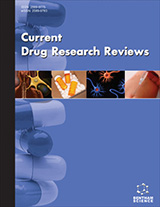
Abstract
Background: The mechanisms underlying synaptic injury and anxiety-like behavioral changes caused by diabetes and the strategies to reverse these changes are not well understood.
Objectives: This study examined the neuroprotective effects of hesperidin on anxiety-like behaviors in diabetic rats and investigated the underlying mechanisms from the perspective of the PKA/CREB pathway.
Methods: Rats with streptozotocin-induced diabetes were treated orally with hesperidin (50 and 150 mg/kg) for 10 weeks. The elevated plus maze (EPM), hole board test (HBT), and marbleburying test (MBT) were used to assess anxiety-like behaviors. We further examined the effects of hesperidin on the PKA/CREB pathway in vivo and in vitro.
Results: The results show that supplementation with hesperidin exerted anxiolytic effects on the diabetic rats, as evidenced by increased percentages of open arm entries and time spent in the open arms in the EPM; decreased numbers of hole visits in the HBT; decreased numbers of marbles buried; and increased expression of PKA, CREB, BDNF, and synaptic proteins in the amygdala and hippocampus of diabetic rats. Hesperidin was found to reverse the imbalance in the PKA/CREB/BDNF pathway. In vitro, we found that the PKA inhibitor H89 reversed the protective effects of hesperidin against cell injury and reversed the HG-induced expression of PKA, pCREB/CREB, and BDNF.
Conclusion: Our results demonstrated that hesperidin could ameliorate the anxiety-like behaviors of diabetic rats and that activating the PKA/CREB/BDNF pathway contributed to the beneficial effects. This study may provide important insights into the mechanisms underlying anxiety-like behaviors in diabetes and identify new therapeutic targets for clinical treatment.
Keywords: Diabetes, anxiety, hesperidin, PKA, CREB, neuroprotective effects.
Graphical Abstract
[http://dx.doi.org/10.2337/diacare.27.5.1047 ] [PMID: 15111519]
[http://dx.doi.org/10.1016/j.psym.2014.05.015 ] [PMID: 25497504]
[http://dx.doi.org/10.1016/j.jad.2007.01.015 ] [PMID: 17292480]
[http://dx.doi.org/10.1016/0031-9384(89)90062-0 ] [PMID: 2526954]
[http://dx.doi.org/10.1001/archpsyc.1983.01790220080013 ] [PMID: 6497572]
[http://dx.doi.org/10.1016/j.neubiorev.2013.03.010 ] [PMID: 23680701]
[http://dx.doi.org/10.1523/JNEUROSCI.22-09-03673.2002 ] [PMID: 11978843]
[http://dx.doi.org/10.1111/j.1460-9568.2011.07606.x ] [PMID: 21395851]
[http://dx.doi.org/10.1515/revneuro-2014-0085] [PMID: 25741943]
[http://dx.doi.org/10.1016/j.tips.2004.01.003 ] [PMID: 15019272]
[http://dx.doi.org/10.3164/jcbn.09-82] [PMID: 20104270]
[http://dx.doi.org/10.1039/C7FO00212B ] [PMID: 28805834]
[http://dx.doi.org/10.1002/ptr.5256] [PMID: 25394264]
[http://dx.doi.org/10.3109/13880209.2013.870584 ] [PMID: 24559476]
[http://dx.doi.org/10.1016/j.biopha.2018.06.036 ] [PMID: 29909344]
[http://dx.doi.org/10.5402/2012/479570 ] [PMID: 22550596]
[http://dx.doi.org/10.1016/j.ijbiomac.2018.07.012 ] [PMID: 30003913]
[http://dx.doi.org/10.1159/000501959] [PMID: 31454820]
[http://dx.doi.org/10.3389/fphar.2020.01325 ] [PMID: 32982741]
[http://dx.doi.org/10.1124/jpet.108.137208 ] [PMID: 18456873]
[http://dx.doi.org/10.1016/0091-3057(91)90590-X] [PMID: 2017455]
[http://dx.doi.org/10.1002/ptr.3560] [PMID: 21717517]
[http://dx.doi.org/10.1002/mnfr.201100682 ] [PMID: 22383310]
[http://dx.doi.org/10.1007/s12272-001-2130-1] [PMID: 19023542]
[http://dx.doi.org/10.1038/nchembio.478 ] [PMID: 21102470]
[http://dx.doi.org/10.1016/j.arr.2010.02.004 ] [PMID: 20188216]
[http://dx.doi.org/10.1016/j.psyneuen.2011.09.016 ] [PMID: 22024111]
[http://dx.doi.org/10.1016/j.bbamcr.2004.03.005 ] [PMID: 15246685]
[http://dx.doi.org/10.1016/S0968-0004(00)01785-0 ] [PMID: 11295557]
[http://dx.doi.org/10.1016/j.neurobiolaging.2014.08.028 ] [PMID: 25442113]
[http://dx.doi.org/10.1146/annurev.neuro.24.1.677 ] [PMID: 11520916]
[http://dx.doi.org/10.1111/cns.12502 ] [PMID: 26854125]
[http://dx.doi.org/10.1016/j.bbr.2017.03.010] [PMID: 28284951]
[http://dx.doi.org/10.1016/j.brainres.2006.09.009 ] [PMID: 17022948]
[http://dx.doi.org/10.1515/RNS.2011.044] [PMID: 21967517]
[http://dx.doi.org/10.1016/j.neuroscience.2009.04.046] [PMID: 19393300]

























